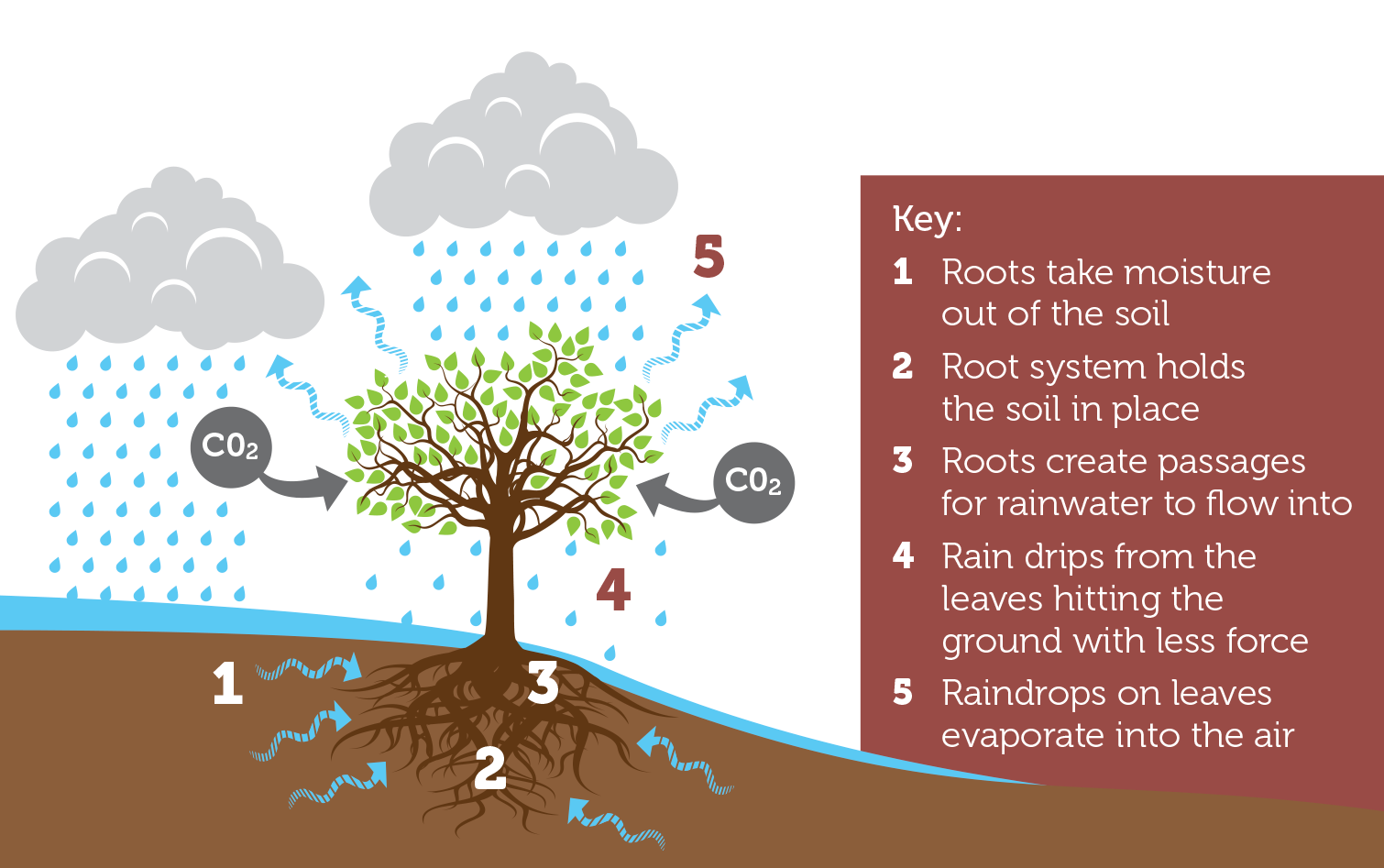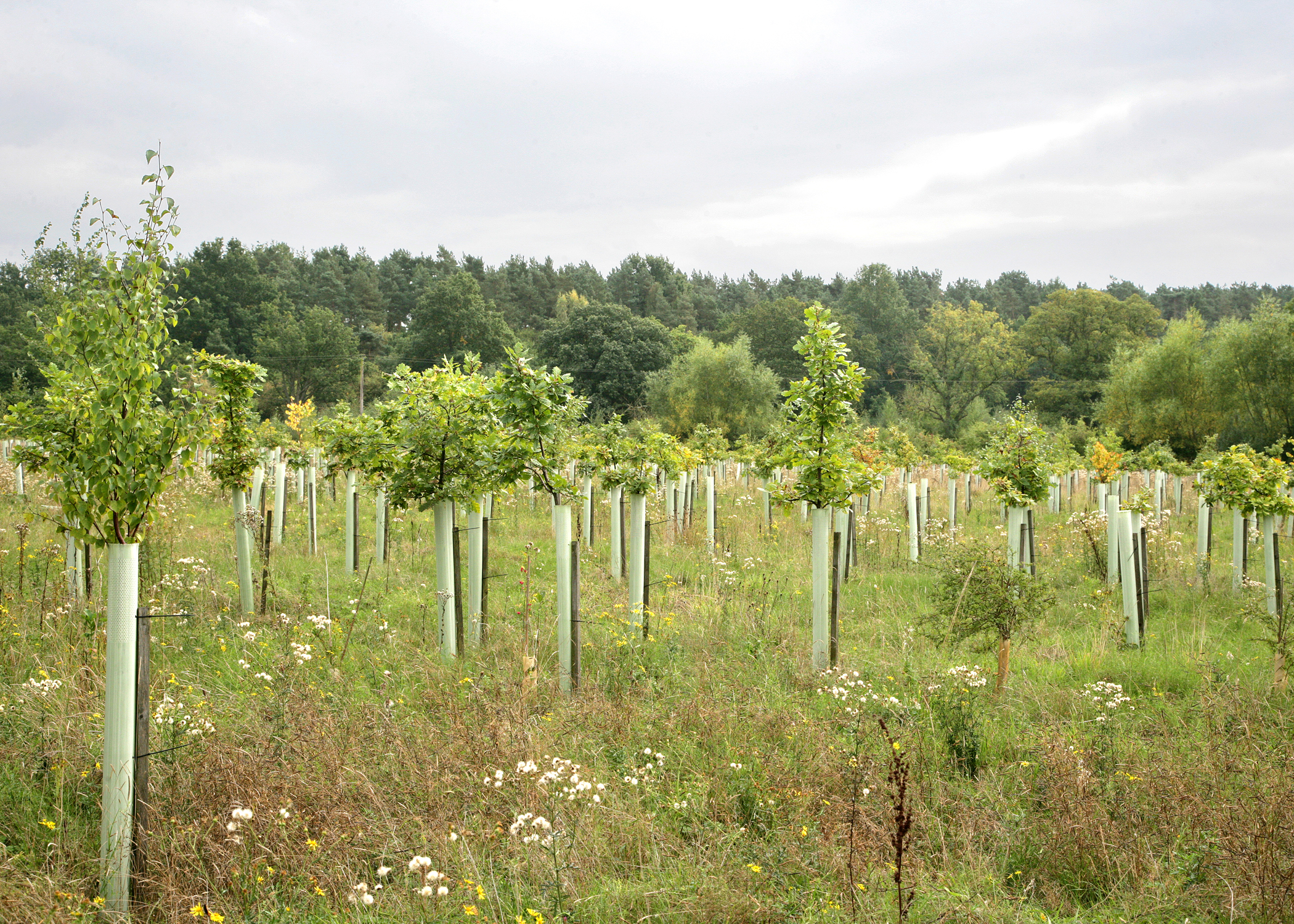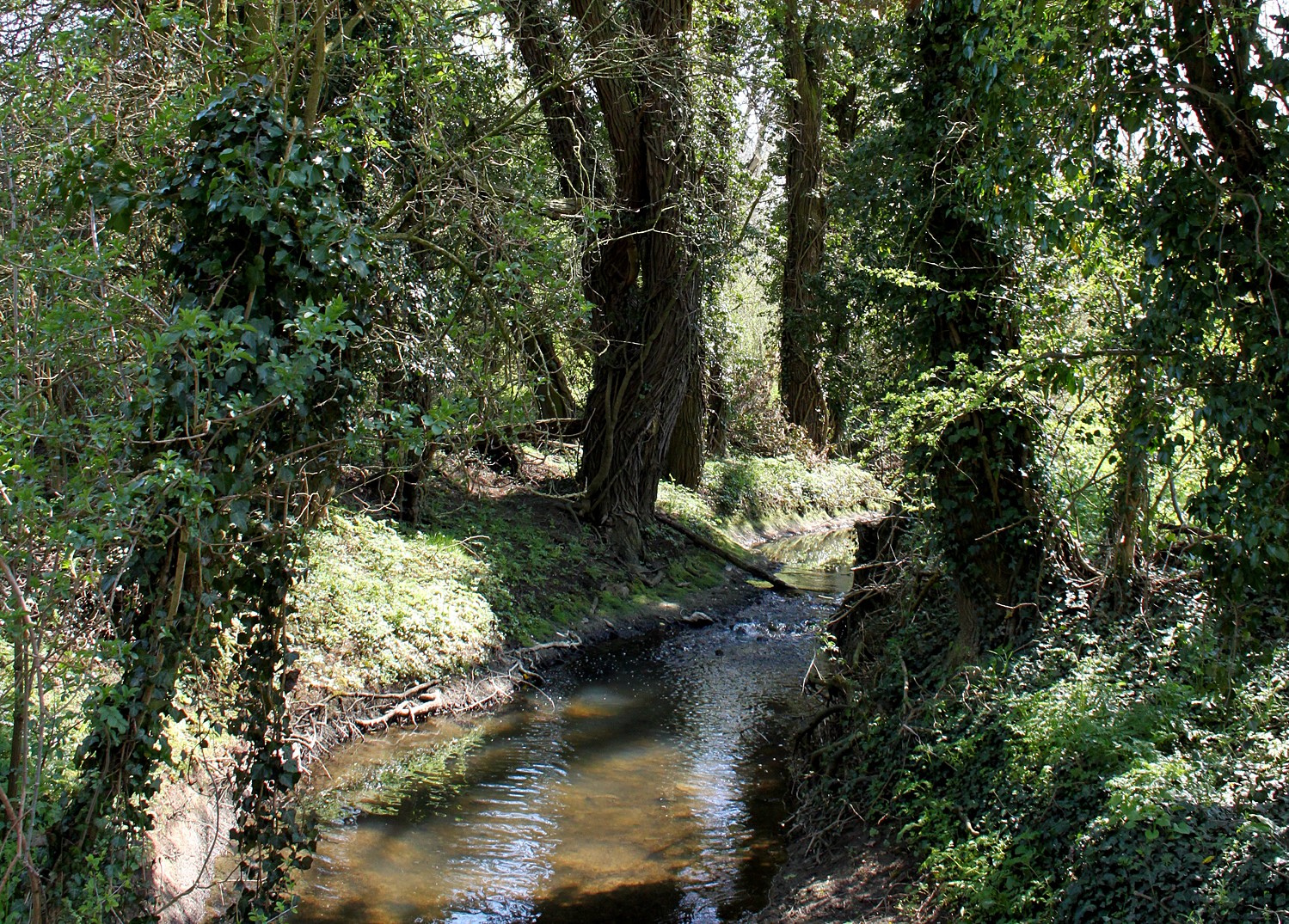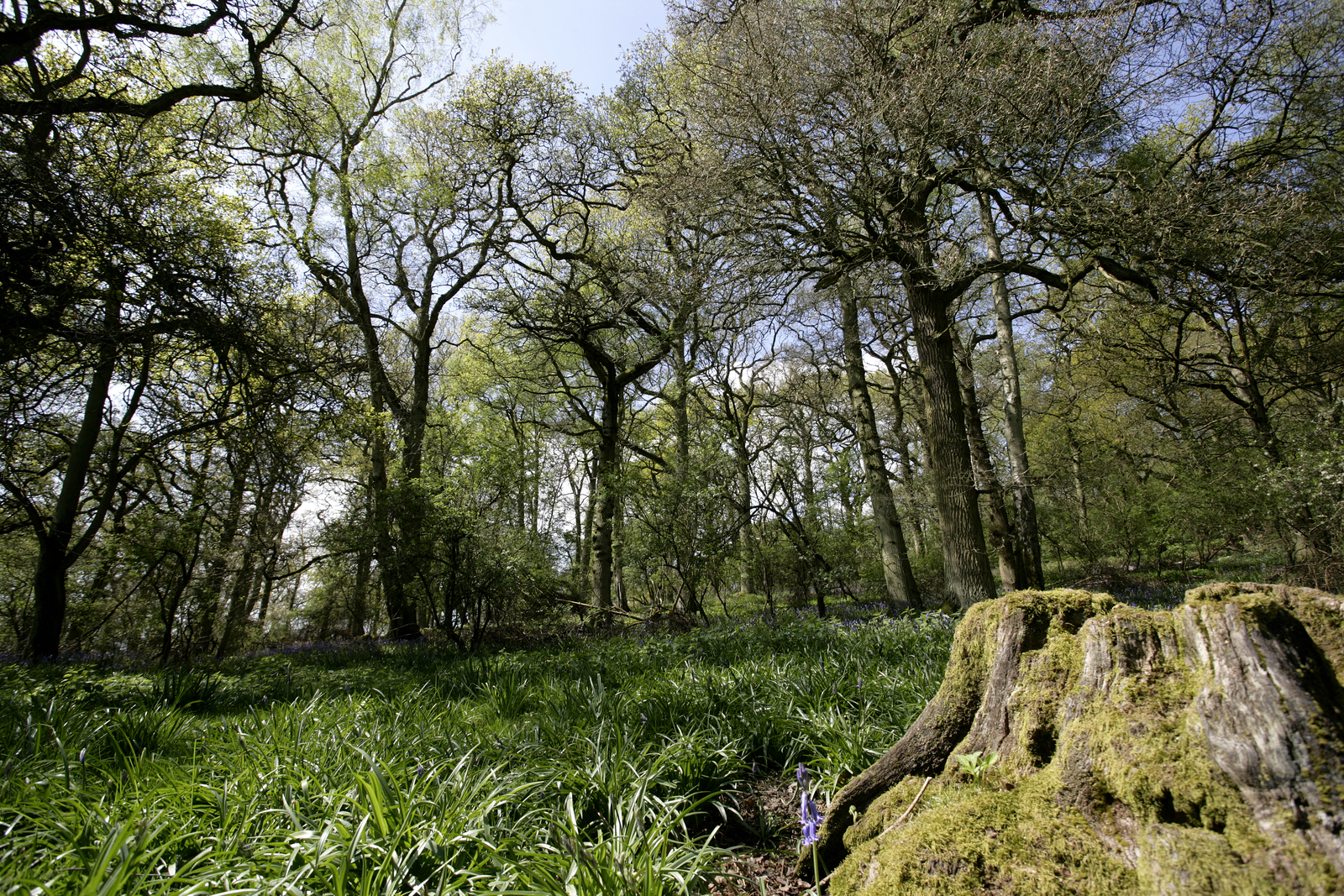
Trees and natural flood management
With flooding on the increase, the flood prevention and alleviation properties of trees are becoming more crucial.
Trees: our first line of defence
Already this winter thousands of people have been evacuated from their homes due to widespread flooding across England and Wales. With the UK seeing an increase in severe weather events, the role trees can play in natural flood management is becoming ever more relevant.
The carbon dioxide absorbing properties of trees make tree planting a great way to tackle climate change, but they also reduce flood risk from their roots to their leaf canopies.

Trees take moisture out of the soil, which decreases the amount of water contributing to flash flooding events. As tree roots grow into the soil, they create little passages which the rainwater flows into rather than running off the land. This root system also holds the soil in place, stopping valuable and nutrient-rich topsoil being washed away into rivers and streams, which can contribute to flooding in times of heavy rainfall.
Raindrops that land on leaves either evaporate straight into the air, so less water reaches the ground which slows the flow of water, or drip onto the ground with less force, so cause less erosion.

Natural flood management in the Forest
As with so many areas of the country, the area within and around the Heart of England Forest is subject to severe flooding.
Created for the benefit of both people and wildlife, the Forest is more than merely a collection of trees. The Forest is being designed in such a way as to consider the positive effects of trees on the local area, and the natural flood management (NFM) which can be designed in to benefit local communities.
Also known as green infrastructure, NFM can play a crucial role in reducing the volume of flooding and/or delaying the arrival of flood peaks to increase preparation time. Native plants and trees are usually the best species to grow, as they are hardier and create a stronger root network.
The Heart of England Forest assists with NFM in 4 ways:
- Increasing storage capacity, for example by creating wetland areas within the Forest mosaic which fill up during flood events, and empty slowly
- Slowing the flow, which can be achieved by planting trees and installing leaky dams to increase resistance and prevent flash flooding
- Increasing the amount of water that drains into the ground, for example using roots to create channels and changing agricultural practices on the charity’s land to improve the soil structure
- De-synchronising peak flows from tributaries.

Working to protect local communities
The Heart of England Forest has several important watercourses running through it, including the Rivers Arrow, Alne and Avon, and is situated in a thriving agricultural landscape. By planting trees strategically, the charity is helping to minimise the risk of flash flooding, which is a key issue for houses in and around the Forest.
In the Spernal area of the Forest, which consists of over 3,000 acres of Forest mosaic, we have worked with the Environment Agency to identify areas where flood defences are struggling and are using trees to help. As the charity owns almost all the upper catchment, any work we can do in managing our own land and creating green infrastructure will have a direct effect on the neighbouring towns of Alcester and Redditch, both of which remain as high priorities for the Environment Agency flood prevention teams.
Another preventative measure being undertaken is the creation of leaky dams, which slow the movement of water downstream. Leaky dams occur naturally when large sections of trees fall into and across waterways, holding back water during high flows. By creating these structures in an artificial environment, and leaving some ditches containing debris, we are working to protect local communities by retaining water on our land, slowing the flow, and delaying the impact of flash flooding lower down in the catchment.

The many benefits of trees
Already the largest new native broadleaf forest in the country, there can be no doubt that the Heart of England Forest has huge potential for using its natural capital to great benefit in tackling extreme weather events linked to climate change. In addition to reducing flood risk, trees benefit our physical and mental health, and through carbon sequestration trees help to fight climate change.
We have planted nearly 1.9 million trees so far, with the aim of planting 13 million to achieve our goal of a 30,000 acre Forest. Find out how you can support our work.



